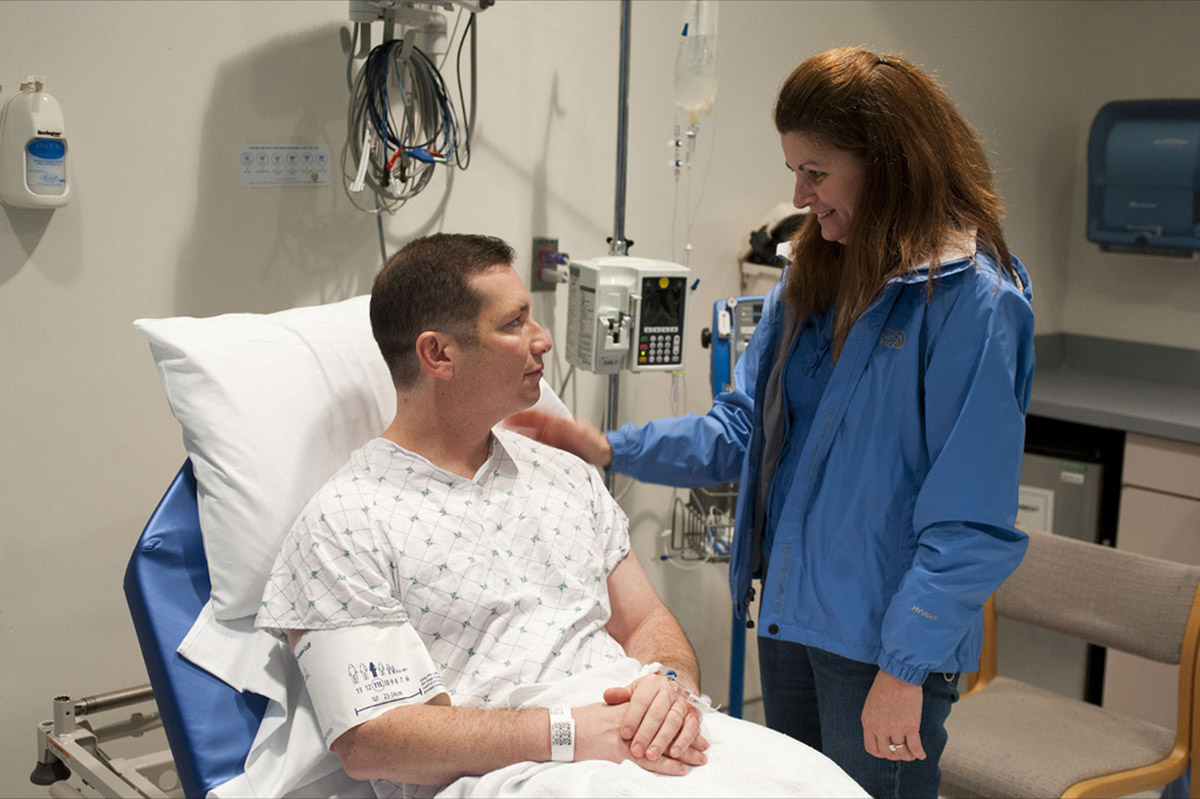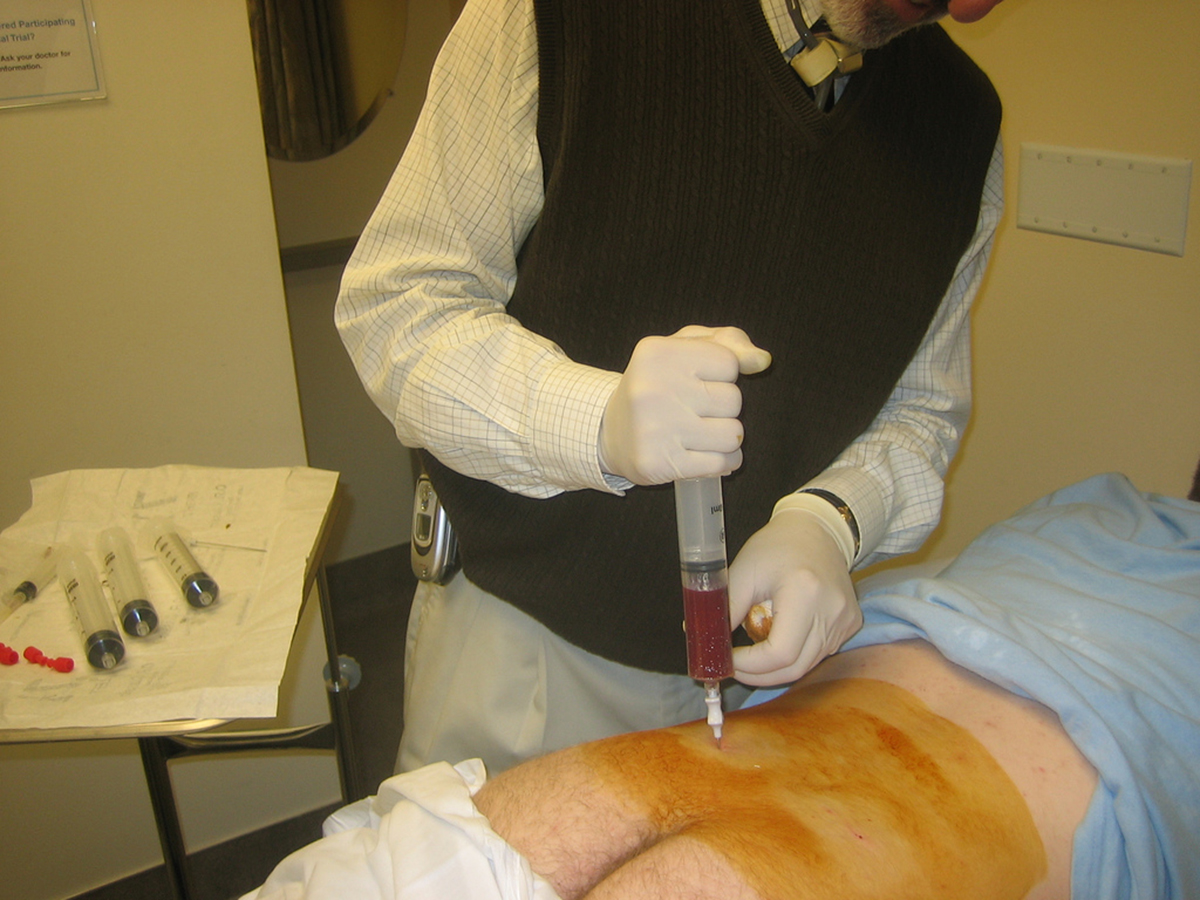Types Of Bone Marrow Transplantations
The soft tissue inside the bone is called bone marrow. It contains immature cells, known as stem cells, that develop into platelets and red and white blood cells. Certain diseases can cause the bone marrow to function improperly.
When cells are collected from the donor’s bloodstream, the procedure may be referred to as a stem cell transplant. When the cells are retrieved through the bone marrow, the procedure is usually called a bone marrow transplant. There are a few different types of bone marrow transplants. The type of procedure advised often depends on the condition being treated, overall health of the patient and the availability of a matching donor.

An allogeneic transplant involves receiving marrow from a donor. The donor can be a relative or unrelated. Either way, the donor must go through a series of tests to make sure they are compatible and a good match for the patient. Certain types of cancers may respond to an allogenic transplant including lymphoma, aplastic anemia and leukemia.
An autologous transplant involves using a patient’s own marrow, which is collected prior to high dose chemo. After the marrow is collected, high doses of chemotherapy are administered with the goal of destroying cancer cells. The marrow is than transplanted into the patient with the hope the marrow will mature into healthy cells. An autologous transplant may be recommended to treat multiple myeloma, Hodgkin’s disease and lymphoma.
Indications For Marrow Transplantation And Complications
Bone marrow transplants are primarily indicated to treat certain types of cancer. In many instances, treatment, such as radiation and chemotherapy will be attempted first. If chemo and radiation fail to get the patient into remission, a bone marrow transplant may be recommended. Some patients will go into remission after their initial treatment with chemo but may relapse at a later time. A transplant may also be advised for people with cancer which has relapsed.
Although a bone marrow transplant may be one of the only treatment options left, it does have several risks and possible complications. Some risks and complications are partly due to the high levels of chemotherapy, which the patient takes prior to the transplant. Other complications can occur due to the infusion of the bone marrow. One of the biggest complications is rejection of the marrow. The body recognizes the marrow is foreign, which causes the body to attack the marrow cells. A condition called graft versus host disease can develop.
In many cases, there are less complications with an autologous transplant. Since the marrow is from the patient’s body, there is little risk of rejection. But some forms of cancer respond better to an allogeneic transplant.
READ Leukemia: The Blood Cancer
There is also a risk the transplant will not work. For unknown reasons, the body may not accept the transplanted marrow. Failure is more likely if the donor and patients are not well matched.
Bone Marrow Transplantation Process for Donor And Patient
If a patient is receiving a transplant from another person, several tests need to be performed to make sure the donor and patients are a good match. If there is a match, the donor and recipient have to go through a different process to prepare for the transplant.
Bone Marrow Transplantation: Donor Prep And Risks
The first step is preoperative tests to ensure the donor is healthy enough to donate the marrow. Tests may include blood work and an electrocardiogram to make sure the donor does not have any underlying medical conditions, which would prevent them from donating the marrow.

The first one involves a surgical procedure to remove the marrow from the donor. The procedure is performed under general anesthesia so the patient is comfortable during the procedure. Small amounts of marrow are extracted from the bone. The most common site used to take the marrow are the hip bones. The amount of bone marrow needed depends on the size of the patient.
A second type of donation called peripheral stem cell donation is a bit more complex. The donor is given a series of shots over five days, which helps the stem cells move into the blood. A needle is inserted into the donor’s vein and blood is removed and passed through a machine, which separates the white cells from the red cells. The white cells, which contain stem cells are transplanted into the patient. The red cells are infused back into the patient.
After the procedure, the donor is taken to recovery to be observed for any complications. The donor may experience a few side effects depending on which procedure they had. For instance, some donors will have a sore hip if marrow was extracted from the hip bone. But unlike donating an organ, bone marrow is replenished in the donor’s body. According to the National Marrow Donor Program, the donor’s marrow usually replaces itself within six weeks.
Patient Preparation For A Bone Marrow Transplantation
The preparation for the patient to receive the bone marrow is different from the donors. Patients are hospitalized in order to prepare for the transplant. The patient is given chemotherapy and sometimes radiation to destroy their bone marrow and kill any cancer cells. Because the dose of chemotherapy is usually high, serious side effects can develop and patients are monitored closely during the process.
The first 100 days after transplant are usually the most critical for the patient. During this time, the patient’s immune system is very weak, leaving him or her susceptible to infection. Even minor viruses can wreak havoc and lead to life-threatening complications.
Patients remain in the hospital until their bone marrow has engrafted and is starting to produce healthy blood cells. Although it can vary, engraftment may occur after about 30 days. At that time, patients may be permitted to leave the hospital, but are under strict guidelines to avoid infection. For example, they are often told to avoid crowded areas and taught how to eat healthy. Most patients remain weak for some time but will gradually feel better.
READ Gene Therapy Beats Leukemia In Eight Days
During their first year after a transplant, a patient’s oncologist will need to monitor them closely for side effects and complications. In most cases, patients can gradually return to normal activities, such as work or school as they feel ready.
- blog.dana-farber.org/insight/2012/11/stem-cell-vs-bone-marrow-transplant-what%E2%80%99s-the-difference/
- http://bethematch.org/Support-the-Cause/Donate-bone-marrow/Donation-FAQs/
- Photo courtesy of Fort Meade via Flickr: www.flickr.com/photos/ftmeade/6600246349
- Photo courtesy of andydr via Flickr: www.flickr.com/photos/andydr/45514657
- Photo courtesy of Fort Meade via Flickr: www.flickr.com/photos/ftmeade/6600246349

